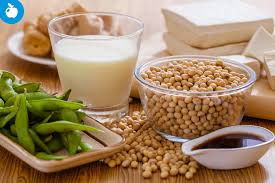Varicose Veins
- Mericia Anglade

- Nov 16, 2023
- 5 min read
VARICOSE VEINS ATTENTION: Before making any change please contact your health care professional. WHAT IS VARICOSE VEINS? Varicose veins are abnormally enlarged, bulging, bluish, lumpy-looking veins, often associated with dull, nagging aches and pains.
CAUSES Malfunction of valves inside the veins. Blood flow from the arteries to the body usually returns to the heart using veins. The veins have tiny valves to prevent the blood from flowing backward in the arteries. When the valves become stretched from excess pressure, they do not work properly, circulation is impaired and blood accumulates in the veins, stretching and enlarging them. Phlebitis – inflammation of a vein wall usually in the legs More common in people who: • stand or sit in one position too long • habitually sit with legs crossed • lack proper exercise • are obese • lift heavy things • are pregnant (especially during the first three months) • have constipation, diverticulosis, hemorrhoids, hiatus hernia • are vitamin C and bioflavonoids deficient as this can weaken the collagen structure in the vein walls • have hereditary tendency • use hormone replacement therapy and birth control pills
SYMPTOMS Visible distended veins, swelling, restlessness, leg sores, itching, leg cramps especially at night, aching or tiredness, or feeling of heaviness in the legs, skin may have a tense or burning sensation. Hemorrhage under the skin may cause the skin to discolor (light brown to bluish), and large, bulging, and lumpy veins. DIETARY CHANGES A high-protein diet increases blood-clotting factors: avoid animal products, milk cheese, butter, ice cream, eggs, fish, turkey, shrimp, lobster, crab, beef, etc. Reduce fat and refined foods, junk foods, fried foods, tobacco, alcohol, coffee, tea, caffeine drinks, chocolate, vinegar, baking powder, baking soda, apple cider vinegar, and hydrogenated vegetable oils Eliminate sugar, high fructose corn syrup, and other artificial sweeteners from the diet as it can increase inflammation in the blood vessels. Chia seeds – 2 tablespoons of grounded flax seeds daily will help to reduce pain and keep the blood vessels pliable Lecithin
– 1 tablespoon - 3 times daily with meals – a fat emulsifier that aids in circulation
Bromelain in pineapples reduces the risk of clot formation in the blood vessels Eat a nourishing diet of fruits, vegetables, raw nuts, seeds, legumes, and whole grains.
Cellulose, an outer layer found in vegetables and fruits is good for relieving symptoms (apples, pears, beets, brazil nuts, broccoli, carrots, celery, green beans, lima beans, peas, brown rice, millet, buckwheat, amaranth) Use enough fiber in the diet, so you do not have to strain at the stool and keep the bowels clear. Straining increases venous pressure on the legs. Include garlic, ginger, and onions in your diet Use in moderation pink Himalayan sea salt an all-natural salt with all 84 trace minerals Drink lots of water to keep the urine color pale yellow to clear.
LIFESTYLE CHANGES To improve circulation: Walk for one hour daily; regular exercise increases the body's ability to dissolve clots. Walking barefoot on early morning grass improves venous blood flow. Circulatory Rock – hold on to a sturdy object; stand with feet apart; step up on your toes, down, and back on your heels, repeat this 300 to 400 times daily. Wear socks during the night to encourage blood circulation to the feet.
Wear loose clothing that does not restrict blood flow. Wear supportive stockings that help to support the varicose veins and prevent swelling.
Elevate your legs above heart level for 20 minutes at least once a day. Elevate your feet in front of you while sitting down to read or watch television. Avoid long periods of standing or sitting. Take rest periods several times during the day to elevate your legs above heart level. Avoid crossing your legs, doing heavy lifting, and putting any unnecessary pressure on your legs. If you stand for long periods, shift your weight between your feet and take short walks.
If you sit for long periods, or at least an hour, get up and walk around. After bathing apply castor oil directly over the problem veins and lightly rub the oil on your legs from the feet up. Maintain a healthy weight. If you have to travel a distance by car, stop and walk around every so often. Do not let the circulation become sluggish. When it enters a low-flow state it can lead to a clot. If you have to lie in bed for a time, move your legs every so often, to increase circulation. Avoid smoking – it restricts the blood vessels. If you have phlebitis or clots of any type, you can have it again. Surgery or prolonged bed rests increase the risk that you will have another attack. So keep moving.
SUPPLEMENTS AND HERBAL RECOMMENDATION Coenzyme Q10 – 10mg daily improves tissue oxygenation, increases circulation, and enhances immunity. Multivitamin and mineral complex (it should contain niacin to prevent clotting, vitamin C to strengthen the walls of the veins and arteries, and vitamin E to reduce the formation of varicose veins and phlebitis – inflammation). Glutathione used as directed on the bottle – protects the heart, veins, and arteries from oxidant damage. Bilberry use as directed on the bottle – supports the health of connective tissue and veins. Seaweed Cure – as directed on bottle (may substitute with Kelp) rich in minerals that build collagen. Kelp capsule or powder – 2 capsules daily. Vitamin D3 2000ius daily to aid in cellular repair and relax the blood vessels. Aloe Vera gel – apply to varicose veins for cooling relief.
Witch hazel – to relieve discomfort to the varicose veins – wet gauze and rub it gently over the veins. Bathing your legs in white oak bark herb tea three times a day helps to stimulate blood flow. Simmer a strong tea and use the tea to make a compress. Apply compresses to affected areas. Hawthorn berries – 2 tablespoons to 4 cups of water, boil for 15 minutes and steep for 40 minutes to 4 hours and drink as water throughout the day. This improves circulation in the legs. (other herbs include Ginkgo biloba and Gotu kola) General instructions for preparing teas
• Hard parts of the plant such as roots, seeds, rhizome, or bark: BOIL for 15 minutes, and then draw for 40 minutes to 4 hours • Delicate parts of the plant such as leaves, flowers, and buds, stems, or clusters: bring water to a boil then DRAW/STEEP for 40 minutes to 3 hours. • For combinations: boil hard parts first for 15 minutes then add delicate parts and draw/steep for 40 minutes to 4 hours. •Drinkwaterr throughout the day.




Comments